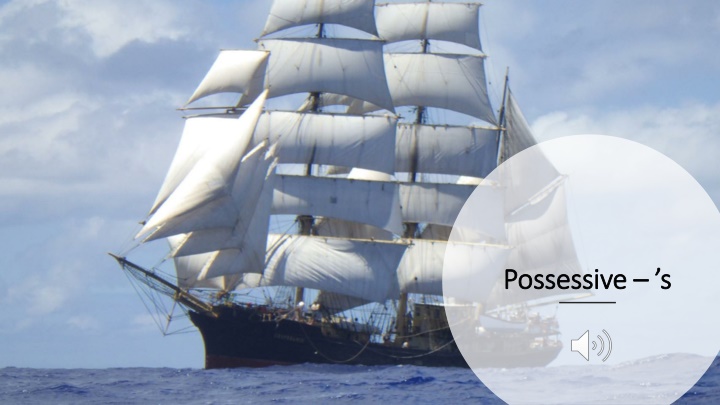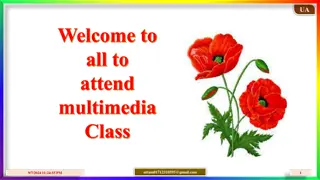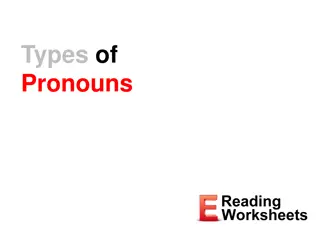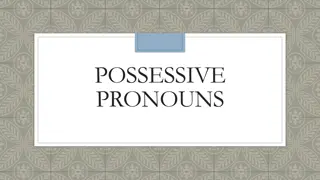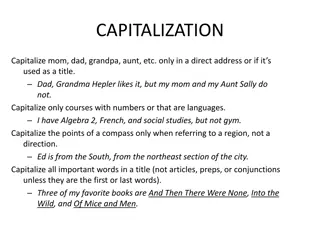Plural and Possessive Forms in English
Learn the distinction between plural (-s) and possessive (-'s) forms in English nouns through examples and explanations. Discover how to form plurals, show possession, and distinguish between plural and possessive usage in sentences.
Download Presentation

Please find below an Image/Link to download the presentation.
The content on the website is provided AS IS for your information and personal use only. It may not be sold, licensed, or shared on other websites without obtaining consent from the author.If you encounter any issues during the download, it is possible that the publisher has removed the file from their server.
You are allowed to download the files provided on this website for personal or commercial use, subject to the condition that they are used lawfully. All files are the property of their respective owners.
The content on the website is provided AS IS for your information and personal use only. It may not be sold, licensed, or shared on other websites without obtaining consent from the author.
E N D
Presentation Transcript
Possessive Possessive s s
Do you know the difference between plural -s and possessive s? ship s flag the flag belongs to the ship ships more than one ship
Plural - s A noun names a person, place, idea, thing or feeling. seas clouds fellow-rover call I must go down to the seas again. a windy day with the white clouds flying. a merry yarn from a laughing fellow-rover. for the callof the running tide Plurals Which of the four nouns are plural? Where in the poem are these nouns used? If there is more than one of the noun we say it is plural. We often show a noun is plural by adding an s.
Possessive s To show possession we add s to the end of the noun. wheel wind sail gull whale the wheel s kick the wind ssong the white sail s shaking the gull s way the whale s way kick song shaking way way Possession means that something is owned by the noun. The s goes at the end of the noun.
Plural -s and possessive - s The white clouds were flying. The white cloud s were flying. Plural - add s Possessive - add s The winds song was calling. The wind s song was calling. Which sentence is correct in each pair?
Plural Possessive - s If the noun already ends in s because it is plural add to the end of that noun. wolf wolf wolves wolf wolves the wolf s fangs the wolves fangs the wolf s blood the wolves blood The goes at the end of the noun. wolves If we added another s to a plural noun it would be hard to say!
Plural Possessive - s ANSWERS The fangs which belonged to one wolf were bared at the doe. The wolves fangs were bared at the doe. The fangs which belonged to all of the wolves were bared at the doe. The wolf s fangs were bared at the doe. The branches which belonged to one tree had wolves sheltering underneath. The wolves sheltered under the tree sbranches. The branches which belonged to several trees had wolves sheltering underneath. The wolves sheltered under the trees branches. Match the punctuation to the description.
Explore more Hamilton Trust Learning Materials at https://wrht.org.uk/hamilton/ .
